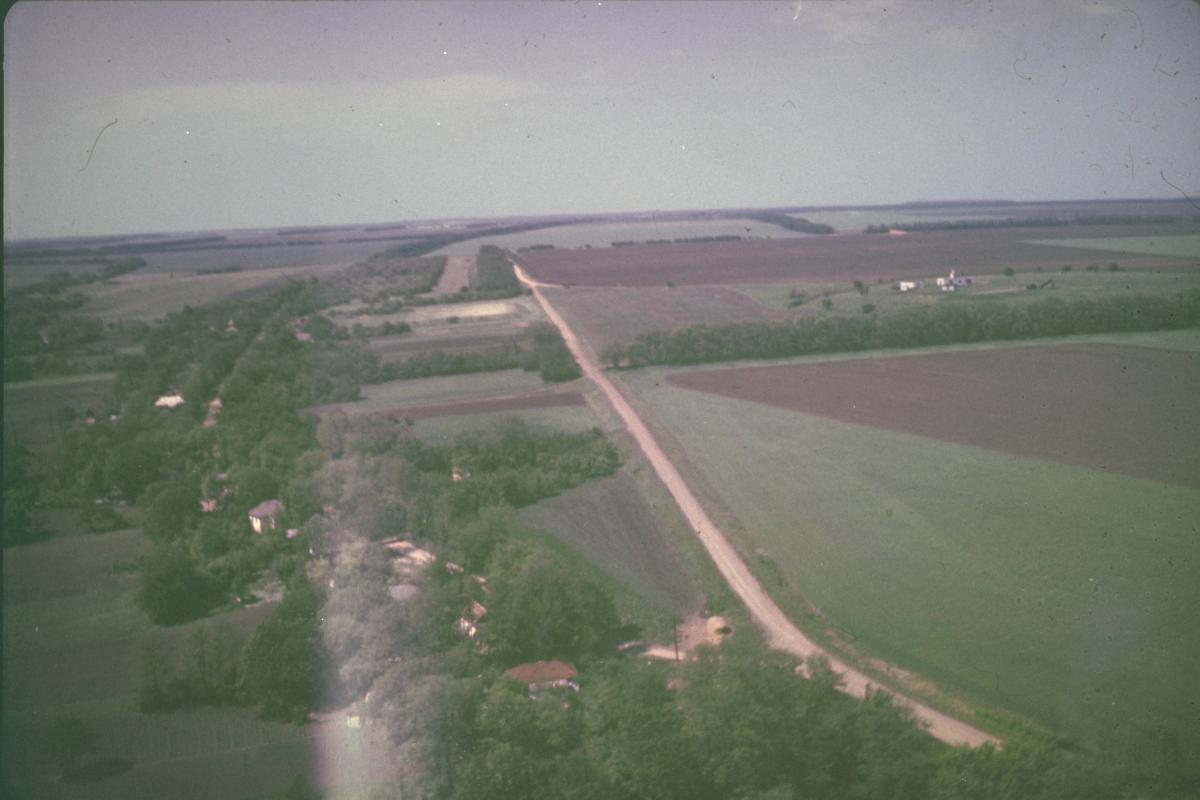
Still Pictures Aerial Photography in Record Group 374: Records of the Defense Threat Reduction Agency
Digital Photographs Relating to Cooperative Threat Reduction Program Activities in the Former Soviet Union, ca. 1996 - 2001 (374-GTD)
This series contains digital photographs documenting the Defense Threat Reduction Agency (DTRA)-monitored disarmament of the former Soviet Union's nuclear weapons systems, other weapons of mass destruction, and associated infrastructure in accordance with the Cooperative Threat Reduction (CTR) Program, the Strategic Arms Reduction Treaty (START), and the Strategic Arms Limitation Talks (SALT II). In focus are former inter-continental ballistic missile (ICBM) silos, previously nuclear-armed aircraft, previously nuclear-armed submarines and other vessels, weapons factories, railways, storage facilities, and support structures and systems in various stages of dismantlement; heavy equipment, vehicles, and processes deployed in dismantlement work; and weapons sites reduced to ruins, or cleared away entirely. Shown, as well, are inspection activities of DTRA contractors, working in cooperation with personnel from Russia, Ukraine, and other former states of the Soviet Union. Along with the coverage of dismantling progress and results--and the close verification thereof--at locations such as Zheleznogorsk and the Murmansk Naval Yard in Russia and the Priluki Air Base in Ukraine, there are views of the visits of the CTR's leading champions in Congress, Senators Sam Nunn of Georgia and Richard Lugar of Indiana, to former Soviet nuclear sites. The finding aid for the series is available in the Still Pictures Research Room. This series is fully digitized.
Photographs of Atmospheric Nuclear Testing at Pacific Island and Nevada Test Sites, 1946 - 1962 (374-ANT)
The photographs in this series are copies of originals still retained by the DNA, DOD Nuclear Information Analysis Center (DASIAC). While most of the original photographs were taken by photographers hired by the Defense Nuclear Agency, some were acquired from other government agencies or branches of the military which participated or had an interest in nuclear testing. A small number of the photographs in this series were copied from originals already deposited in the Still Pictures Branch of the National Archives. Finally, researchers should note that a large number of photographs relating to the nuclear testing program are still classified and therefore remain in agency custody. This series consists of black-and-white and color photographs of above-ground nuclear testing at Pacific island and Nevada test sites primarily from 1946 to 1958, the year in which the Soviet Union and the United States agreed to a moratorium on the testing of atomic and hydrogen warheads. The Pacific island test and observation sites included in this series are Bikini and Eniwetok atolls, Christmas Island, Johnston Island, and Maui, HI. There are also a few photographs documenting Operation DOMINIC and Events LITTLE FELLER and SEDAN in 1962. Other operations documented are Operation CROSSROADS, SANDSTONE, GREENHOUSE, IVY, CASTLE, REDWING, HARDTACK, TUMBLER/SNAPPER, UPSHOT/KNOTHOLE, WIGWAM, PLUMBBOB, DANNY BOY, and BUSTER/JANGLE. The photographs for each operation are divided into two main subject areas. First, they depict the detonation of aerial, underwater, or surface bombs, presumably as a means to compare the size, shape, and immediate effects of bombs launched under varying circumstances. Second, they illustrate test activities, that is, the preparations--the machinery and equipment used, personnel assembled, buildings constructed, and precautionary measures taken--for each test. The photographs also illustrate the impact which nuclear blasts had both on the landscape of the test site and on the buildings, bridges, and railroads specifically designed and built for the tests. Of particular interest are photographs showing the fleet assembled for Operation Crossroads, the first post-World War II test, and the structural damage to the ships following detonation. The finding aid for the series is available in the Still Pictures Research Room. This series is fully digitized.

